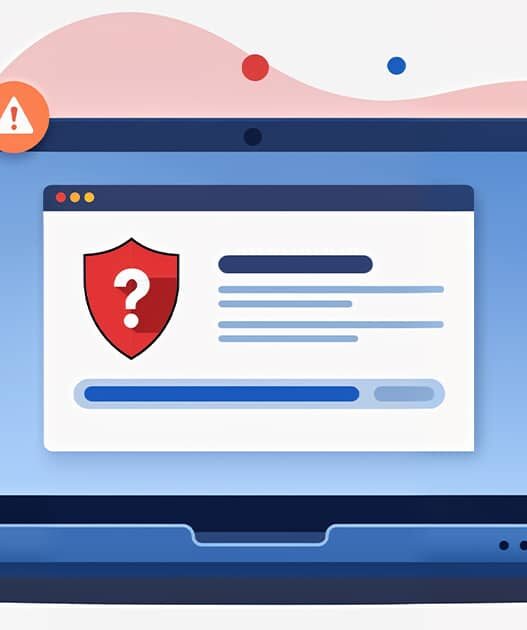Introduction
While torrenting is an efficient way to download large files, sometimes torrents can fail, leaving you frustrated and wondering what went wrong. Torrent failures can occur for several reasons, ranging from tracker issues to insufficient seeders. Understanding these common problems and knowing how to fix them can save you time and ensure successful downloads.
In this article, we’ll explore why some torrents fail and provide solutions to fix these common issues, ensuring that you get the most out of your torrenting experience.
Common Issues That Cause Torrents to Fail
1. Insufficient Seeders
One of the most common reasons a torrent fails is the lack of seeders. Seeders are users who have completed the download and are sharing the full file. If there aren’t enough seeders, your torrent client won’t be able to download all parts of the file, causing the download to stall or fail entirely.
- How to Identify: Check the seeder-to-leecher ratio in your torrent client. If there are many more leechers than seeders, the torrent may struggle to download.
- Solution: Choose torrents with a higher number of seeders compared to leechers. If your download is stuck, try searching for a different torrent of the same file with more seeders.
2. Inactive or Offline Trackers
Trackers play a crucial role in helping your torrent client find peers to download from. If the tracker is offline or inactive, your torrent won’t be able to locate peers, and the download will fail.
- How to Identify: Your torrent client may display messages like “tracker not responding” or “connection timed out” in the tracker status.
- Solution: Add more trackers to the torrent to improve the chances of finding peers. You can find updated tracker lists online and paste them into the tracker section of your torrent client.
3. Corrupt or Incomplete Torrent File
Sometimes the .torrent file itself is corrupted or incomplete, causing the download to fail. This can happen if the file was not properly created or became damaged during the download.
- How to Identify: The torrent won’t start, or it may immediately fail with an error message like “invalid torrent file”.
- Solution: Download the .torrent file from a reliable source or look for a magnet link instead. Magnet links are less likely to become corrupted since they don’t rely on a separate file.
4. ISP Throttling or Blocking
Some Internet Service Providers (ISPs) actively block or throttle torrent traffic, slowing down or stopping your downloads. This is done to manage bandwidth or comply with legal restrictions.
- How to Identify: If your torrent speeds are unusually slow or stop altogether, despite having plenty of seeders and a good tracker, your ISP may be throttling your connection.
- Solution: Use a VPN (Virtual Private Network) to bypass ISP throttling and protect your privacy. A VPN encrypts your traffic, preventing your ISP from seeing that you’re torrenting.
5. Firewall or Antivirus Blocking
Firewalls and antivirus programs can sometimes block torrent clients or the ports they use to connect to peers, causing your torrents to fail.
- How to Identify: Your torrent client may display a “port blocked” message, or you may see no peer connections at all.
- Solution: Make sure your torrent client is allowed through your firewall. You can either configure your firewall to allow the necessary ports or disable the firewall temporarily while downloading (not recommended for long-term use). For antivirus programs, add your torrent client to the exceptions list.
6. Inactive or Dead Torrent
A torrent becomes inactive or “dead” when no seeders are available to share the file. Even if the torrent had many seeders when you started, those seeders may have disconnected or stopped seeding.
- How to Identify: The torrent client shows “0 seeders”, or the download has stalled for a long period.
- Solution: Search for another torrent of the same file that has more active seeders. You can also try waiting for more seeders to come online, though this is less reliable.
How to Fix Common Torrent Issues
1. Add More Trackers
If your torrent is stuck or slow, adding more trackers can help connect you to more peers. Trackers are servers that help your torrent client find seeders and leechers. Adding more trackers increases the chances of finding available peers.
- How to Add Trackers:
- Right-click the torrent in your client.
- Select Properties or Trackers.
- Paste the new tracker URLs into the tracker list.
- Press OK to save the changes.
2. Enable DHT and PEX
DHT (Distributed Hash Table) and PEX (Peer Exchange) allow your torrent client to find peers without relying solely on trackers. Enabling these features can help you find more peers, even if the trackers are down or not working properly.
- How to Enable DHT and PEX:
- In qBittorrent: Go to Tools > Preferences > BitTorrent and enable DHT and Peer Exchange (PEX).
- In uTorrent: Go to Options > Preferences > BitTorrent and enable DHT and PEX.
3. Use a VPN to Bypass ISP Throttling
If you suspect your ISP is throttling your torrent traffic, using a VPN can bypass this restriction. A VPN hides your IP address and encrypts your traffic, preventing your ISP from detecting and slowing down your torrents.
- Recommended VPNs: ExpressVPN, NordVPN, and CyberGhost are popular VPNs that support torrenting and offer fast download speeds.
4. Switch to a Different Torrent Client
Sometimes, switching to a different torrent client can resolve issues caused by client-specific bugs or limitations. For example, if you’re having trouble with uTorrent, you might try switching to qBittorrent, which is known for being lightweight and user-friendly.
5. Recheck the Torrent
Most torrent clients allow you to force a recheck of the torrent file. This ensures that all the pieces of the file are intact and helps resolve issues caused by incomplete or corrupted downloads.
- How to Recheck a Torrent:
- In qBittorrent: Right-click the torrent and select Force Recheck.
- In uTorrent: Right-click the torrent and select Force Recheck.
Other Tips to Prevent Torrent Failures
1. Choose Reliable Torrent Sites
Downloading torrents from trusted sources reduces the likelihood of encountering corrupt or fake files. Sites like The Pirate Bay, RARBG, and 1337x are known for hosting high-quality torrents.
2. Check File Comments and Ratings
Before downloading a torrent, check the comments and ratings left by other users. This can help you avoid torrents that are fake, corrupted, or have missing files.
3. Regularly Update Your Torrent Client
Ensure you’re using the latest version of your torrent client to benefit from bug fixes, performance improvements, and enhanced security features. Outdated clients may struggle to handle new file formats or encounter issues connecting to trackers.
Conclusion
Torrents can fail for many reasons, from inactive trackers to insufficient seeders and even ISP interference. However, by understanding these common issues and using the solutions provided in this guide, you can minimize failures and enjoy a smoother torrenting experience. Remember to use a VPN for privacy, keep your torrent client updated, and choose reliable sources for your torrents.

















